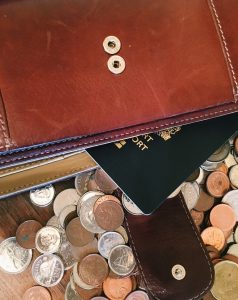In the world of forex trading, there are two important terms that traders need to be familiar with: stop loss (s/l) and take profit (t/p). These two terms are essential in managing risk and ensuring profitability in forex trading. S/l refers to the price level at which a trade will be automatically closed to limit the trader’s losses, while t/p is the price level at which a trade will be closed to take profits. But what determines the figures to fill in s/l and t/p?
There are various factors that traders consider when determining the figures to fill in s/l and t/p. These factors can be broadly categorized into two: technical and fundamental factors.
Technical factors
Technical analysis is a common approach used by traders to determine the figures to fill in s/l and t/p. Technical analysis involves the use of charts and indicators to identify price patterns, trends, and support and resistance levels. These factors can be used to determine the ideal levels to set s/l and t/p.
Support and resistance levels are important technical levels that traders use to determine the figures to fill in s/l and t/p. Support levels are price levels where buying interest is strong enough to prevent the price from falling further, while resistance levels are price levels where selling interest is strong enough to prevent the price from rising further. Traders often set their s/l levels just below the support level and their t/p levels just below the resistance level.
Another technical factor that traders consider when determining s/l and t/p levels is the use of indicators such as moving averages, oscillators, and trend lines. These indicators can help traders identify potential trend changes and determine the ideal levels to set s/l and t/p.
Fundamental factors
Fundamental analysis is another approach used by traders to determine the figures to fill in s/l and t/p. Fundamental analysis involves analyzing economic, financial, and geopolitical factors that can affect the price of a currency pair. These factors can be used to determine the ideal levels to set s/l and t/p.
Economic factors such as interest rates, inflation, and GDP growth can affect the value of a currency. For example, if a country’s central bank raises interest rates, its currency is likely to appreciate against other currencies. Traders can use this information to set their s/l and t/p levels.
Geopolitical factors such as political instability, trade tensions, and natural disasters can also affect the price of a currency. For example, if there is political instability in a country, the value of its currency is likely to depreciate. Traders can use this information to set their s/l and t/p levels.
Conclusion
In conclusion, the figures to fill in s/l and t/p in forex trading are determined by various factors, including technical and fundamental factors. Traders often use technical analysis to identify support and resistance levels, as well as indicators to determine potential trend changes. They also use fundamental analysis to consider economic, financial, and geopolitical factors that can affect the price of a currency. By considering these factors, traders can set their s/l and t/p levels to manage risk and ensure profitability in forex trading.


